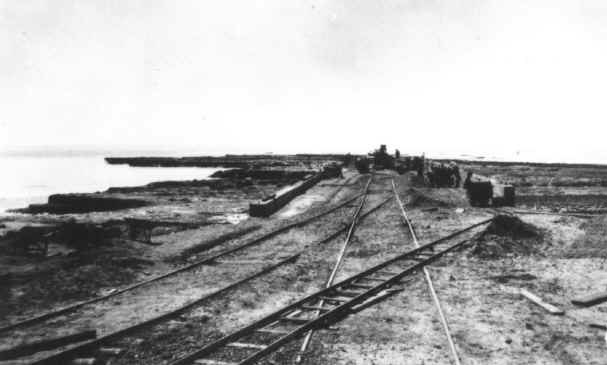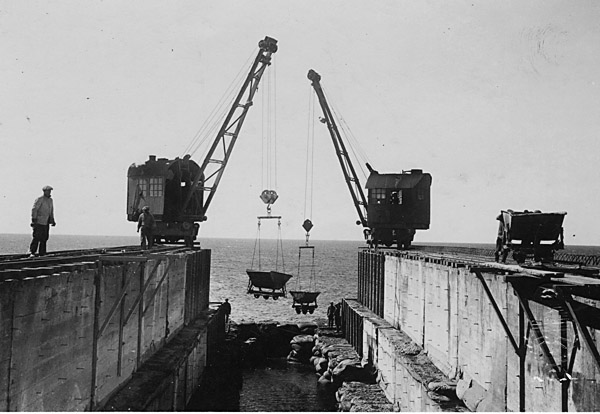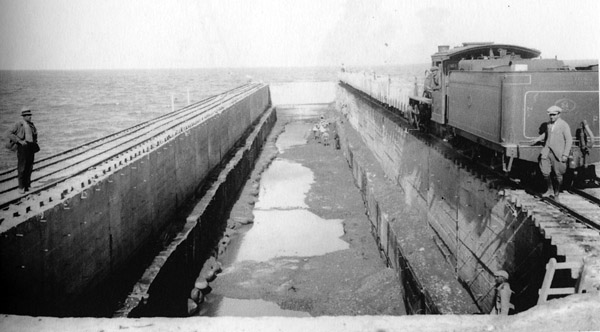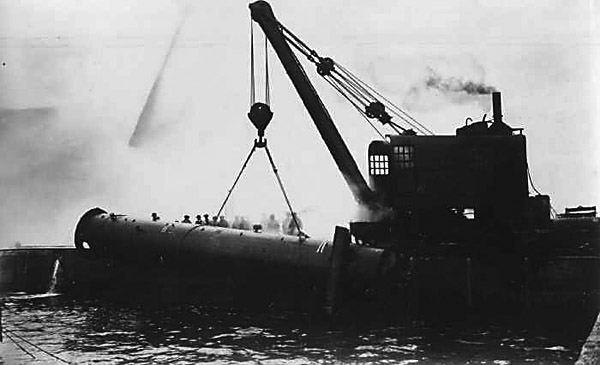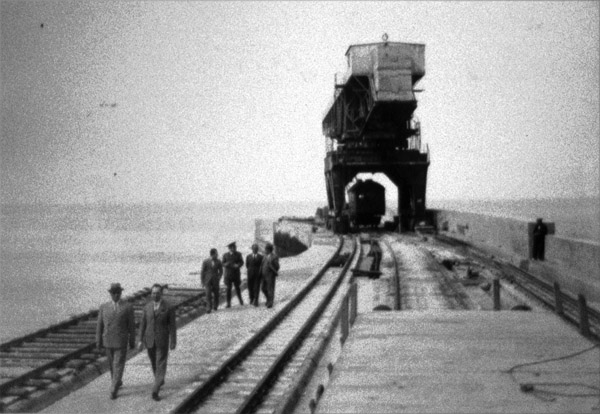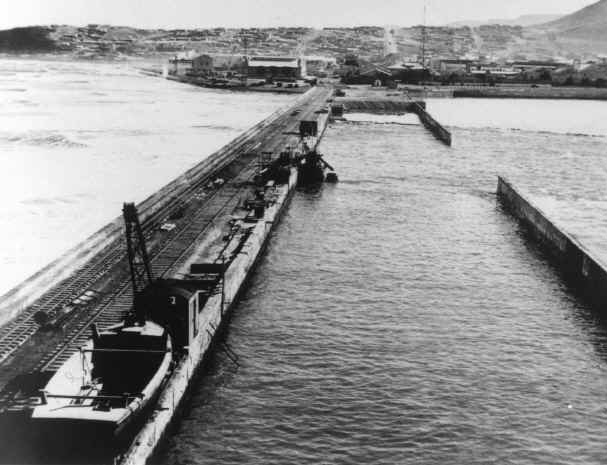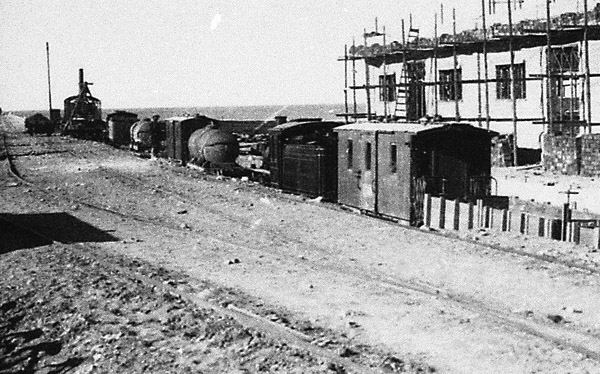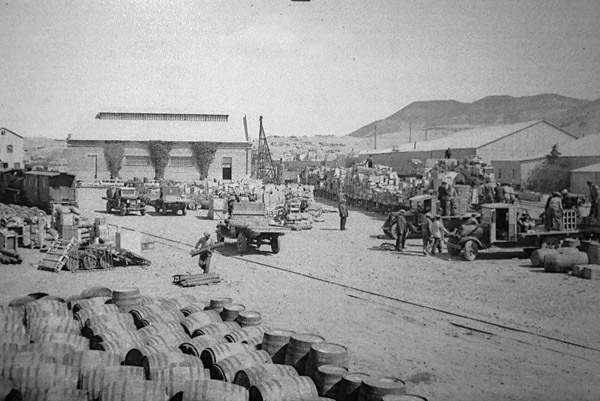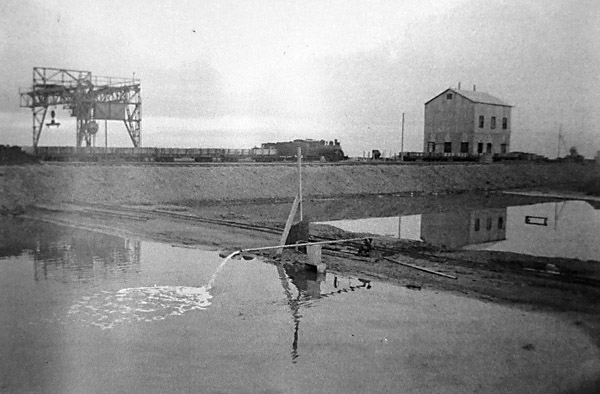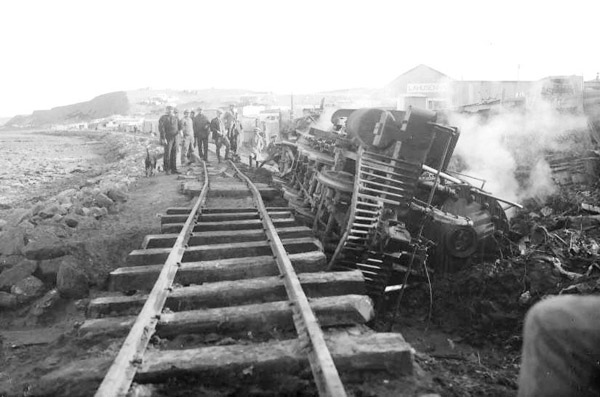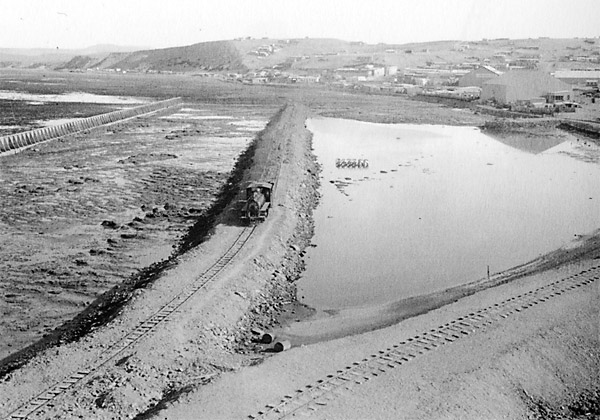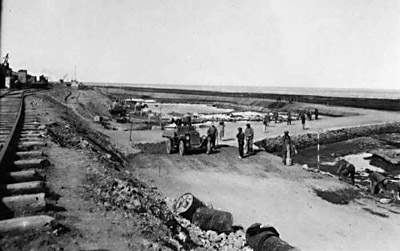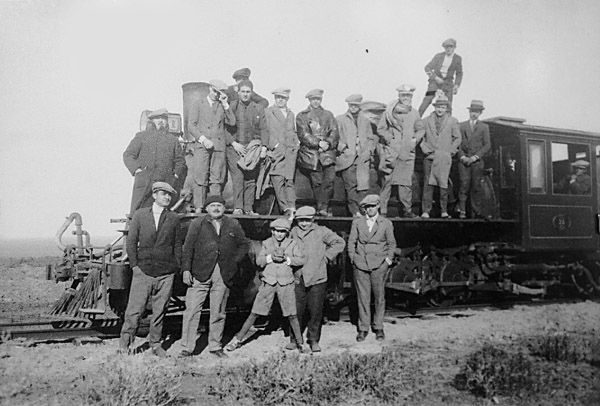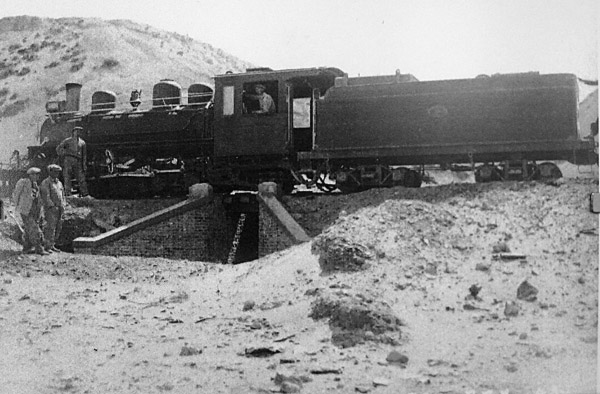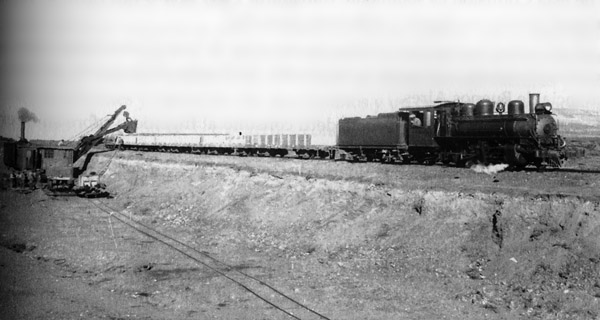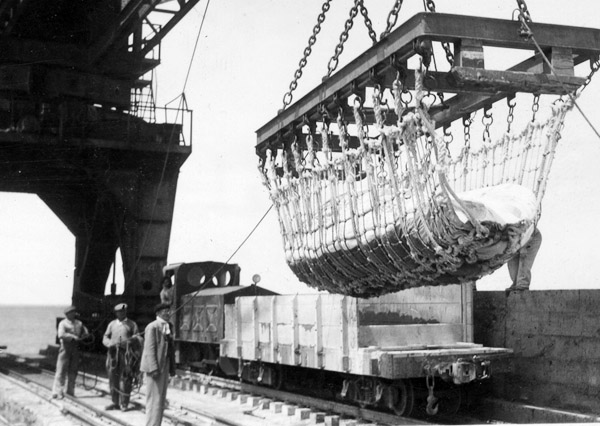 |
|||||||||||||||
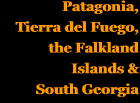 |
|||||||||||||||
 |
|||||||||||||||
 |
|||||||||||||||
Appendix 17 More pictures at Comodoro Rivadavia The port construction works 1 This early photo shows a broad gauge railway track laid out at the start of the works that would eventually build the new port across the shelf of rock that formed it's foundations. Some 60cm gauge track has then been laid temporarily across it, but the broad gauge rails look shiny so must still be in use.
2 The first main stage of the works was to build two concrete walls that would eventually carry the Titan crane. This was known in Spanish as the 'dique viaducto'. Here two smaller steam cranes lower skip wagons into the void, possibly carrying concrete for the works beneath.
Baldwin no. 24 does a tightrope act on the southerly wall of the 'dique viaducto' ().
3 A larger steam crane, by the French manufacturer Pinguely, was used for some of the larger jobs.
4 In 1932 the big Skoda titan or hammerhead crane was erected along the line of the 'dique viaducto'. This was principally for the laying of concrete blocks as the port works continued, but it crops up doing a variety of tasks particularly when rolling stock was being brought in for both broad and narrow gauge railways.
5 A view from the top of the big crane, looking back towards the land, shows the 'dique viaducto' on the left, complete and with the space between the two walls filled in. Work can now proceed on the wider area of infill, protected on the north ide by a slimmer concrete facing wall. The railway tracks are not totally clear in this photo, but must include two outer 75cm gauge tracks on which the big crane ran.
6 At the inland end of the port two big customs warehouses were built. These still stand today. in the picture below the more easterly one is seen under construction, with 75cm gauge locos and stock in the adjacent siding. Two furgon cargas, two tank wagons, several plataformas and one or possibly both Baldwin 2-8-2s can be identified.
7 One of the customs warehouses is seen here on the left, but more interesting is the buzz of activity around it. On the far left is a 75cm gauge Baldwin 2-8-2 with a 'furgon carga' in front of it. To the right a couple of lorries are loading from a line of railway wagons. The load probably being goods that has arrived at the port and been temporarily transferred to rail to bring it ashore.
8 The location of this picture is not precisely certain, but is probably taken looking north across the 'restinga sur' reclamation area and towards the port. A Baldwin is at the head of a line of 75cm gauge 'plataformas'.
9 Early in the railway's life, in June 1928, one of the Baldwins had an unfortunate derailment just west of the main FCE station (). The original shoreline can be seen on the left; the reclamation work at this point not yet under way.
10 One of the two Baldwins brings a spoil train along the embankment in the middle of the 'restings sur' recalamation area.
11 Another picture from the early days of port works. The protective wall to the right is probably around the first area to be reclaimed, that which later contained the customs warehouses. There is a broad gauge track on the left but, as yet, no sign of the 75cm gauge.
12 Some rather better photos of the Baldwins have appeared more recently. This one confirms the number 24 for one of the two, with no 25 being the other one. The nature of the group and of the special occasion is unknown.
13 Another view showing a Baldwin, this time over a substantial culvert. Note the bell carried by the loco suggesting that this is soon after the locos arrived for bells were not common in Argentine use and tended to disappear after overhaul.
14 A Baldwin at the spoil excavation area at 'Cerro Negro'.
15 The O&K diesel loco of 1937 is more clearly seen here, having brought a single bogie wagon to the Titan crane. The boarded sides of the wagon and the netted load of the crane suggest that a loose load, of sand or some such, has been brought down to be transferred in one go using the spreader beams.
References: 9-8-11 |
|||||||||||||||
Chapter 7
The 1922 75cm gauge empire


Main pages
Railcars •
Esquel route construction photos •
Com. Rivadavia to Punta Piedras •
More photos at Com. Rivadavia •
Appendices
9 Track layout photos at Ing. Jacobacci •
